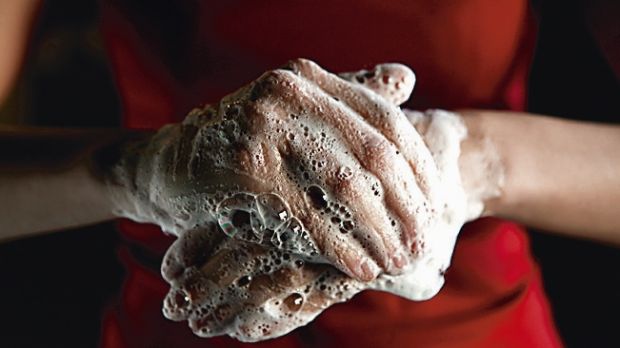
Hand washing rates in hospitals have been inflated, according to an Australian professor.
Hand washing compliance rates in public hospitals are being inflated by as much as 30 per cent, an Australian infection control expert says, which could be putting patients at risk of the spread of deadly disease.
It comes as St Vincent’s Hospital steps up its infection control procedures in the wake of an emerging superbug, Klebsiella? pneumoniae? carbapenemase-producing bacteria (KPC), which has been detected in 57 people in Victorian hospitals the past three years. It is believed to have contributed to the deaths of at least two people.
Hand hygiene is recognised as one of the key methods of halting the spread of infection in hospitals, with regular audits conducted by the Australian Commission on Safety and Quality to analyse compliance rates.

Statistics published on the Department of Health website show compliance rates of 80 per cent across Victoria in the most recent period between July and September 2014.
Individual hospitals are also ranked, with Williamstown Hospital recording the best result of 98 per cent and Monash Medical Centre and West Gippsland Healthcare the worst with 73 per cent.
However a leading academic in the field has cast doubt over the numbers, primarily because they are collected by auditors in hospitals while health care workers are aware of their presence.
Professor Mary-Louise McLaws, from the UNSW Hospital Infection and Epidemiology Surveillance Unit, said there needed to be more education about the importance of hand hygiene instead of simply inspecting staff.
She said the figures published were inflated by between 20-30 per cent in some public hospitals and that there were wards she was aware of where hand washing among workers was below 50 per cent.
“It’s like when you’re being watched by police on the highway, you slow down,” she said.
“It’s the same thing with hand hygiene. We need auditors on the ward that are there to help.”
A former epidemiology advisor to the World Health Organisation, Professor McLaws? also worked in collaboration with the Beijing Health Bureau to review its response to the SARS outbreak among healthcare workers.
“My experience from SARS is that that there were helpers who would tell staff when to hand hygiene so they didn’t infect themselves or patients,” she said.
Professor McLaws? has also written extensively on hand hygiene. A study she co-authored in 2013 found that doctors lagged behind nurses when it came to hand hygiene in hospitals.
Doctors were the worst among health workers for washing their hands, said Professor McLaws?. She said this could be put down to doctors being more concerned with diagnosis and treatment, or even old fashioned views that “healing hands can’t be infected”.
“They fail to understand that hand hygiene is just as important as getting a patient’s name right,” she said.
“Hand hygiene is the first thing that they should be doing before thinking about antibiotics or taking them to surgery.”
The National Hand Hygiene Initiative was set up in 2009 to improve the rates of washing in Australian hospitals, stating that “practices have been universally poor among health care workers”. It recommends that staff either use soap and water or an alcohol rub for hands that are visibly soiled.
There are five “moments” that health care workers should wash their hands: before touching a patient, before a procedure, after a procedure, after touching a patient and after touching a patient’s surroundings.
